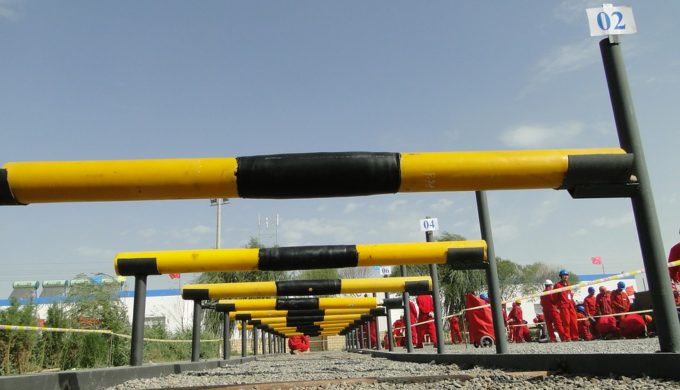A report released earlier this year by HSBC predicted that Texas is on track to outpace the oil production of both Iran and Iraq by 2019. Texas is home to two rather massive oil fields, and behind Russia and Saudi Arabia, it’s the number three oil producer in the world. The shale oil boom has contributed greatly to that, making the Permian Basin a hotbed of production.
Plummeting drilling costs have played an integral role in the Permian developments, sparking a gold rush mentality with it. In the meantime, oil prices have risen dramatically, and places such as Saudi Arabia (a major player) are about to max out their production. In fact, according to media reports, some industry executives believe the Permian Basin oil pocket to rival that of Saudi Arabia’s Ghawar Field, which is recognized as the largest conventional oilfield in the world. With the addition of new technology driving the cost of pumping oil down, a well can be profitable at prices below $40 per barrel.
Photo: Wikimedia
The shale oil development and growth in Texas has been defined as reshaping the world’s energy landscape. The result is the pumping of more oil out of the U.S., making the country less reliant on imports from the Middle East. According to reports, the combined output of the Permian and Eagle Ford (the south Texas oil field) is expected to be 5.6 million barrels per day in 2019. That will see the Lone Star State producing over half of America’s entire oil production. In comparison, Iraq is producing 4.8 million barrels per day while Iran is on track for 3 million a day.
Photo: Pixabay
In the meantime, the booming mentality in the Permian Basin has resulted in some industry growing pains. The area is fast running out of pipelines which support the supply of oil out of the state of Texas. This forces the need for investment into other means of transport such as trucks and rail, which are more costly and could potentially be dangerous. Although the U.S. oil rig count remained stable, according to recent reports, the number of rigs in the Permian Basin dropped by a small number. In addition, the cost to service the needs of the oilfields has risen by 10-15 percent for some Permian-located companies, and still others are reporting that it’s difficult to source employees, leading to a critical labor shortage.





